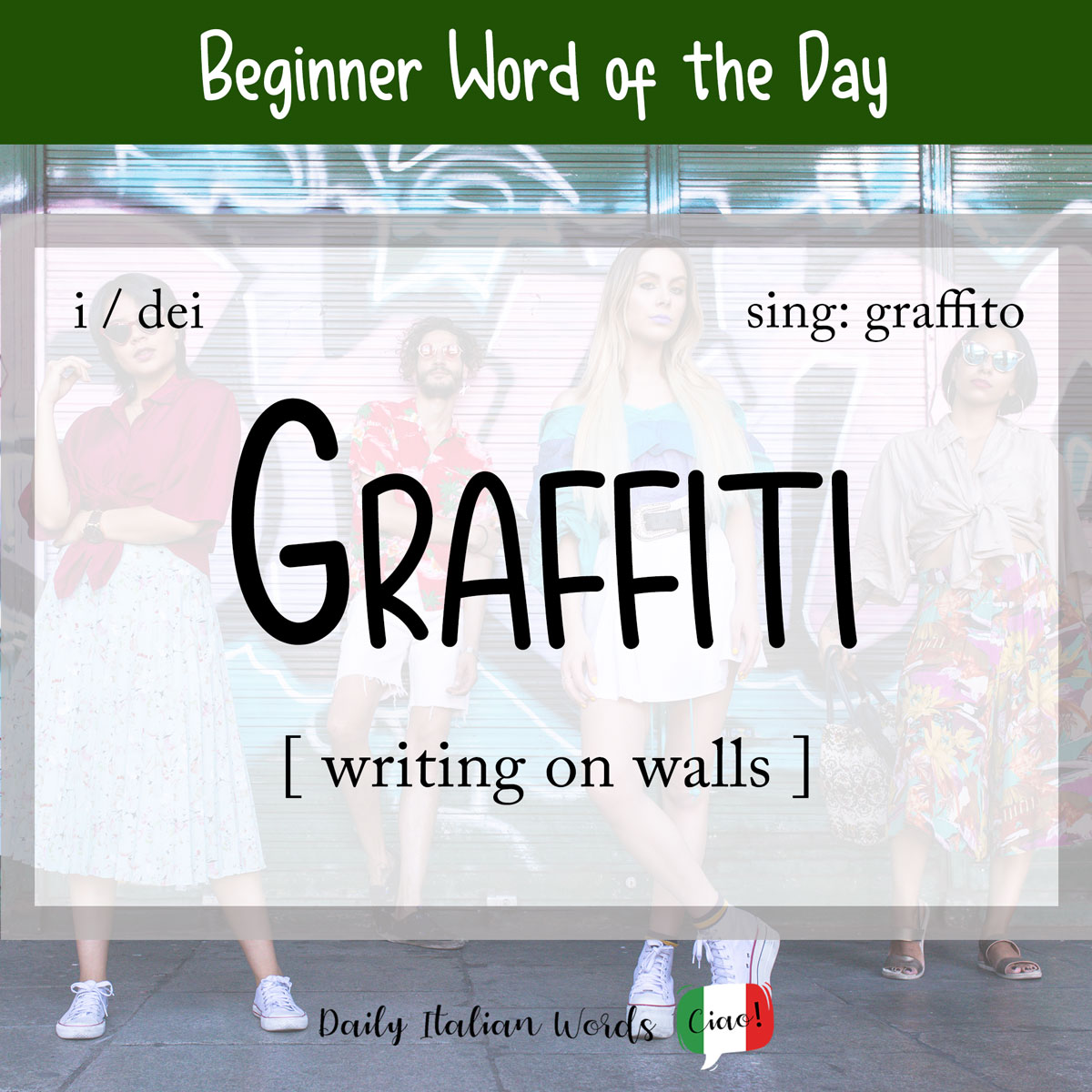An Italian word that has an established place in the English language is graffiti which specifically refers to writing or drawings on public walls, usually done without permission and as a form of artistic expression.
In English, graffiti is almost always used as if it were a mass noun but in Italian, you will encounter both the singular graffito and the plural graffiti. The singular form refers to individual inscribed images in historic art. The word originates from the verb graffiare meaning to scratch.
graffiti
writing on the walls / graffiti

Examples of ancient graffiti etched into the walls and monuments of historic Roman sites such as Pompeii still exist to this day. From declarations of love and desire to political rhetoric and poetry, the writing on these walls gives archeologists important insight into not only how the Romans lived and the daily issues they faced but also their level of literacy.

Today graffiti is mostly employed as a form of political and social expression. Etchings have largely been replaced by spray paint, markers and stencils, and some famous examples, such as those by the anonymous street artist Banksy, can fetch in the millions.
Whether you regard graffiti as nothing more than a form of vandalism or as a distinctive art form, one thing is for sure: it is here to stay.
Related Italian words:
- graffio = a scratch
- graffiare = to scratch
- graffiato = scratched
- sgraffiare = a stronger, more expressive form of “graffiare”
Useful phrases:
Il comune ha speso tanti soldi per ripulire i muri dai graffiti.
The town spent a lot of money on cleaning the graffiti off the walls.
I graffiti sono una forma d’arte moderna.
Graffiti is a form of modern art.
Ci sono un sacco di graffiti a Roma.
There is loads of graffiti in Rome.
Heather Broster is a graduate with honours in linguistics from the University of Western Ontario. She is an aspiring polyglot, proficient in English and Italian, as well as Japanese, Welsh, and French to varying degrees of fluency. Originally from Toronto, Heather has resided in various countries, notably Italy for a period of six years. Her primary focus lies in the fields of language acquisition, education, and bilingual instruction.


